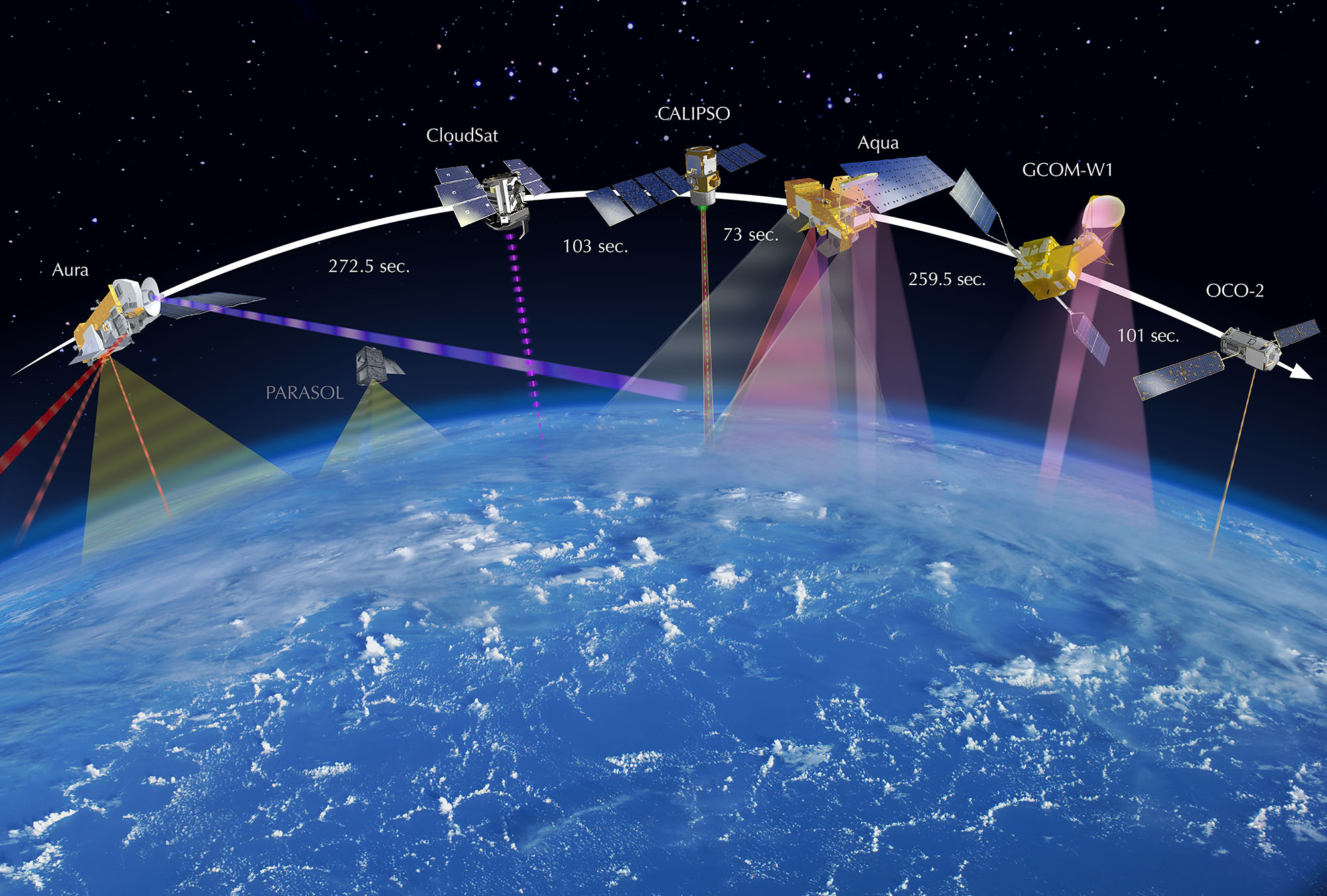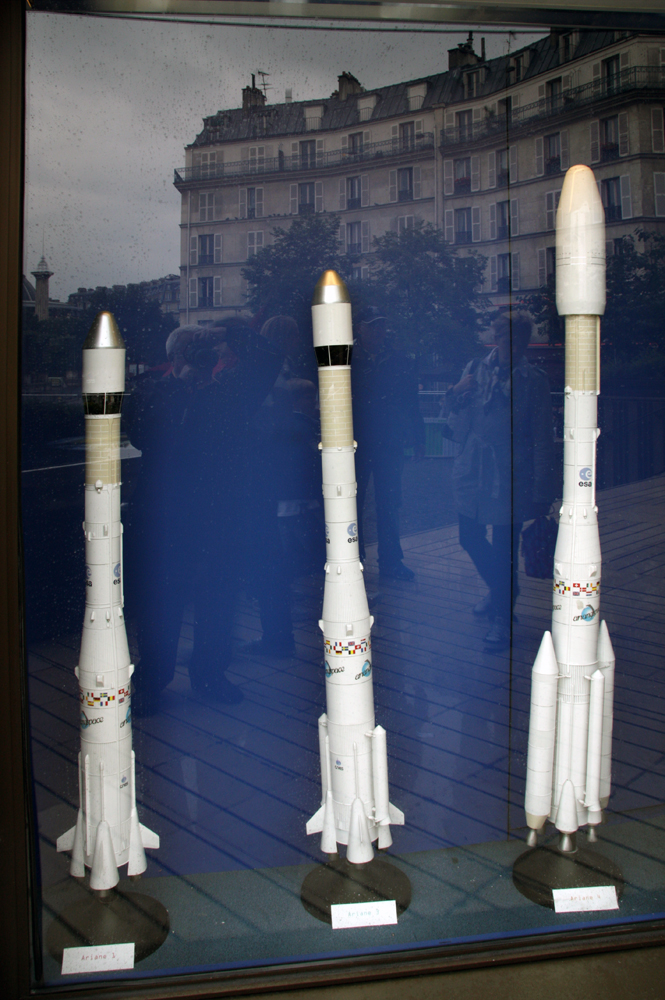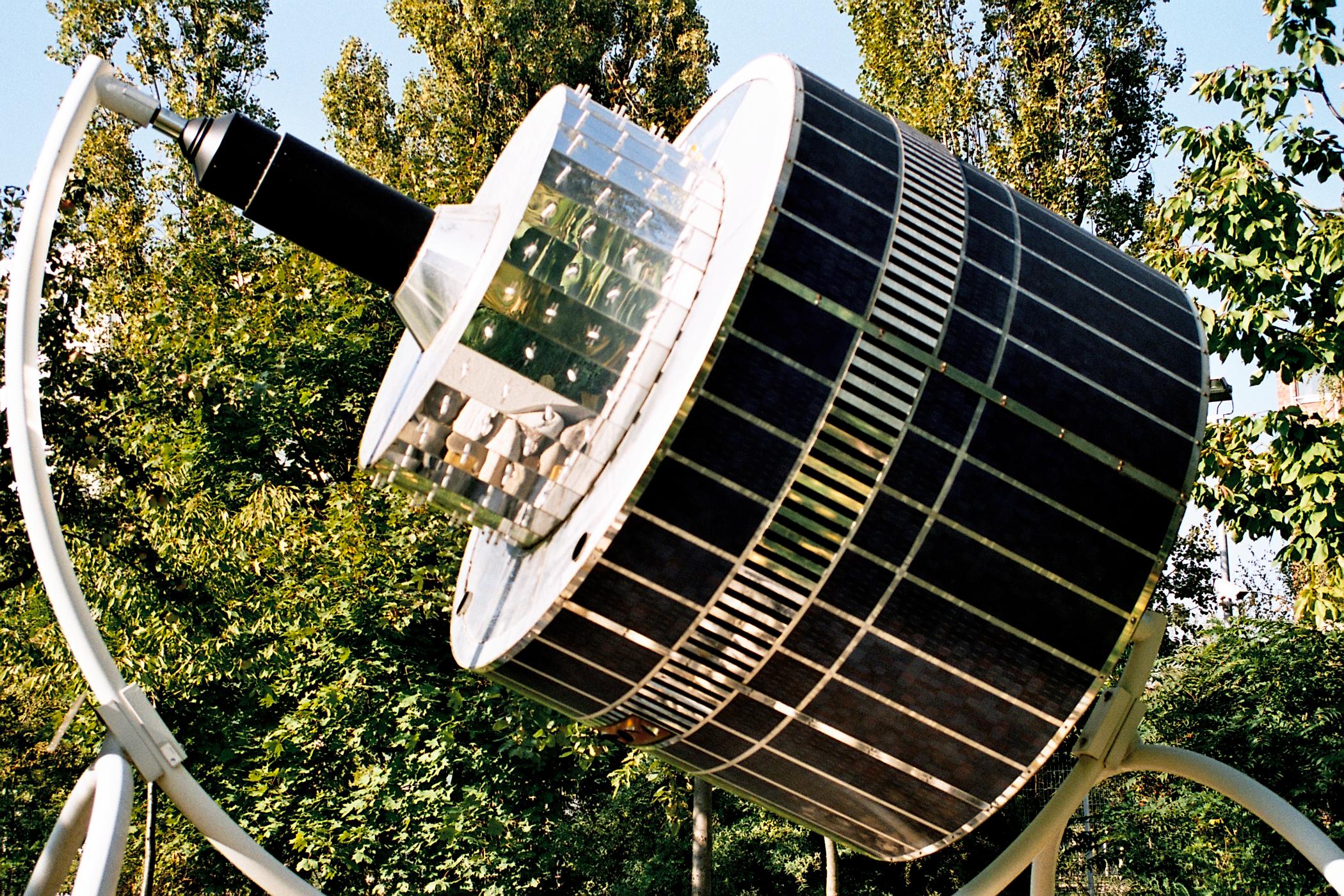|
SARAL-AltiKa
SARAL (Satellite with ARgos and ALtiKa) is a cooperative altimetry technology mission of Indian Space Research Organisation (ISRO) and Centre National d'Études Spatiales (CNES). SARAL performs altimetric measurements designed to study ocean circulation and sea surface elevation. Mission A CNES / ISRO MOU ( Memorandum of Understanding) on the SARAL mission was signed on 23 February 2007. The SARAL mission is complementary to the Jason-2 mission of NASA / NOAA and CNES / EUMETSAT. It will fill the gap between Envisat and the Sentinel-3 mission of the European Copernicus Programme (Global Monitoring for Environment and Security - GMES programme). The combination of two altimetry missions in orbit has a considerable impact on the reconstruction of sea surface height (SSH), reducing the mean mapping error by a factor of 4. Instruments The SARAL payload module was provided by CNES: ALtiKa (Ka-band altimeter), Doppler Orbitography and Radiopositioning Integrated by Satellite (D ... [...More Info...] [...Related Items...] OR: [Wikipedia] [Google] [Baidu] |
Earth Observation Satellite
An Earth observation satellite or Earth remote sensing satellite is a satellite used or designed for Earth observation (EO) from orbit, including spy satellites and similar ones intended for non-military uses such as environmental monitoring, meteorology, cartography and others. The most common type are Earth imaging satellites, that take satellite images, analogous to aerial photographs; some EO satellites may perform remote sensing without forming pictures, such as in GNSS radio occultation. The first occurrence of satellite remote sensing can be dated to the launch of the first artificial satellite, Sputnik 1, by the Soviet Union on October 4, 1957. Sputnik 1 sent back radio signals, which scientists used to study the ionosphere. The United States Army Ballistic Missile Agency launched the first American satellite, Explorer 1, for NASA's Jet Propulsion Laboratory on January 31, 1958. The information sent back from its radiation detector led to the discovery of the Earth's Van ... [...More Info...] [...Related Items...] OR: [Wikipedia] [Google] [Baidu] |
CNES
CNES () is the French national space agency. Headquartered in central Paris, the agency is overseen by the ministries of the Armed Forces, Economy and Finance and Higher Education, Research and Innovation. It operates from the Toulouse Space Centre and the Guiana Space Centre. The president of CNES is Philippe Baptiste. CNES is a member of Institute of Space, its Applications and Technologies. It is Europe's largest national organization of its type. History CNES was established under President Charles de Gaulle in 1961. It is the world's third oldest space agency, after the Soviet space program (Russia), and NASA (United States). CNES was responsible for the training of French astronauts, until the last active CNES astronauts transferred to the European Space Agency in 2001. , CNES is working with Germany and a few other governments to start a modest research effort with the hope to propose a LOX/methane reusable launch vehicle by mid-2015. If built, flight testing w ... [...More Info...] [...Related Items...] OR: [Wikipedia] [Google] [Baidu] |
Satellite Bus
A satellite bus (or spacecraft bus) is the main body and structural component of a satellite or spacecraft, in which the payload and all scientific instruments are held. Bus-derived satellites are less customized than specially-produced satellites, but have specific equipment added to meet customer requirements, for example with specialized sensors or transponders, in order to achieve a specific mission. They are commonly used for geosynchronous satellites, particularly communications satellites, but are most commonly used in spacecraft which occupy low Earth orbit missions. Examples Some satellite bus examples include: * Boeing DS&S 702 * Lockheed Martin Space Systems A2100 * Moog Inc. SL-OMV, Meteor, Meteorite * * INVAP ARSAT-3K * Airbus D&S Eurostar * ISRO's I-1K, I-2K, I-3K, I-4K, I-6K, and Indian Mini Satellite bus * NASA Ames MCSB * SSL 1300 * family * Orbital ATK Star Bus family, inc GEOStar * Mitsubishi Electric DS2000 * Spacecraft bus of the Jam ... [...More Info...] [...Related Items...] OR: [Wikipedia] [Google] [Baidu] |
ARGOS (satellite)
The Advanced Research and Global Observation Satellite (ARGOS) was launched on 23 February 1999 carrying nine payloads for research and development missions by nine separate researchers. The mission terminated on 31 July 2003. ARGOS was launched from SLC-2W, Vandenberg Air Force Base, California, atop a Boeing Delta II (7920-10) launch vehicle. Construction of the spacecraft bus and integration of the satellite's payloads was accomplished by Boeing at their Seal Beach, California facility. The program was funded and led by the DoD's Space Test Program (STP) as mission P91-1 (the first STP mission contract awarded in 1991). The US$220 million mission was operated by Air Force Space Command's Space and Missile Systems Center's Test and Evaluation Directorate (then Space Development and Test Wing, now SMC's Advanced Systems and Development Directorate) from their RDT&E Support Complex (RSC) at Kirtland Air Force Base, New Mexico. ARGOS was the first mission operated 100% from ... [...More Info...] [...Related Items...] OR: [Wikipedia] [Google] [Baidu] |
Sea Surface Height
Ocean surface topography or sea surface topography, also called ocean dynamic topography, are highs and lows on the ocean surface, similar to the hills and valleys of Earth's land surface depicted on a topographic map. These variations are expressed in terms of average sea surface height (SSH) relative to Earth's geoid. The main purpose of measuring ocean surface topography is to understand the large-scale ocean circulation. Time variations Unaveraged or instantaneous sea surface height (SSH) is most obviously affected by the tidal forces of the Moon and by the seasonal cycle of the Sun acting on Earth. Over timescales longer than a year, the patterns in SSH can be influenced by ocean circulation. Typically, SSH anomalies resulting from these forces differ from the mean by less than ± at the global scale. Other influences include changing interannual patterns of temperature, salinity, waves, tides and winds. Ocean surface topography can be measured with high accuracy and pr ... [...More Info...] [...Related Items...] OR: [Wikipedia] [Google] [Baidu] |
Copernicus Programme
Copernicus is the Earth observation component of the European Union Space Programme, managed by the European Commission and implemented in partnership with the Member state of the European Union, EU member states, the European Space Agency (ESA), the European Organisation for the Exploitation of Meteorological Satellites (EUMETSAT), the European Centre for Medium-Range Weather Forecasts (ECMWF), the Joint Research Centre (JRC), the European Environment Agency (EEA), the European Maritime Safety Agency (EMSA), Frontex, European Union Satellite Centre, SatCen and Mercator Océan. The programme aims at achieving a global, continuous, autonomous, high quality, wide range Earth observation capacity. Providing accurate, timely and easily accessible information to, among other things, improve the management of the environment, understand and Climate change mitigation, mitigate the effects of climate change, and ensure civil security. Since 2021, Copernicus is a component of the Europ ... [...More Info...] [...Related Items...] OR: [Wikipedia] [Google] [Baidu] |
Sentinel-3
Sentinel-3 is an Earth observation heavy satellite series developed by the European Space Agency as part of the Copernicus Programme. As of 2024, it consists of 2 satellites: Sentinel-3A and Sentinel-3B. After initial commissioning, each satellite was handed over to EUMETSAT for the routine operations phase of the mission. Two recurrent satellites, Sentinel-3C and Sentinel-3D, will follow in approximately 2025 and 2028 respectively to ensure continuity of the Sentinel-3 mission. Each Sentinel-3 satellite is designed to operate for seven years in a sun-synchronous low-Earth orbit. The satellites use multiple sensors to measure topography, temperature, marine ecosystems, water quality, pollution, and other features for ocean forecasting and environmental monitoring. Overview The Sentinel-3 satellites travel in a sun-synchronous orbit at an altitude of approximately , with an inclination of 98.6° and orbit cycle of approximately 100 minutes. The local time of descending nod ... [...More Info...] [...Related Items...] OR: [Wikipedia] [Google] [Baidu] |
Envisat
Envisat ("Environmental Satellite") is a large Earth-observing satellite which has been inactive since 2012. It is still in orbit and considered space debris. Operated by the European Space Agency (ESA), it was the world's largest civilian Earth observation satellite. It was launched on 1 March 2002 aboard an Ariane 5 from the Guyana Space Centre in Kourou, French Guiana, into a Sun synchronous polar orbit at an altitude of 790 ± 10 km. It orbits the Earth in about 101 minutes, with a repeat cycle of 35 days. After losing contact with the satellite on 8 April 2012, ESA formally announced the end of Envisat's mission on 9 May 2012. Envisat cost 2.3 billion Euro (including 300 million Euro for 5 years of operations) to develop and launch. The mission has been replaced by the Sentinel series of satellites. The first of these, Sentinel 1, has taken over the radar duties of Envisat since its launch in 2014. Mission Envisat was launched as an Earth observation ... [...More Info...] [...Related Items...] OR: [Wikipedia] [Google] [Baidu] |
European Organisation For The Exploitation Of Meteorological Satellites
The European Organisation for the Exploitation of Meteorological Satellites (EUMETSAT) is an intergovernmental organisation created through an international convention agreed by a current total of 30 European Member States. EUMETSAT's primary objective is to establish, maintain and exploit European systems of operational meteorological satellites. EUMETSAT is responsible for the launch and operation of the satellites and for delivering satellite data to end-users as well as contributing to the operational monitoring of climate and the detection of global climate changes. The activities of EUMETSAT contribute to a global meteorological satellite observing system coordinated with other space-faring states. Satellite observations are an essential input to numerical weather prediction systems and also assist the human forecaster in the diagnosis of potentially hazardous weather developments. Of growing importance is the capacity of weather satellites to gather long-term measurem ... [...More Info...] [...Related Items...] OR: [Wikipedia] [Google] [Baidu] |
NOAA
The National Oceanic and Atmospheric Administration (NOAA ) is an American scientific and regulatory agency charged with forecasting weather, monitoring oceanic and atmospheric conditions, charting the seas, conducting deep-sea exploration, and managing fishing and protection of marine mammals and endangered species in the US exclusive economic zone. The agency is part of the United States Department of Commerce and is headquartered in Silver Spring, Maryland. History NOAA traces its history back to multiple agencies, some of which are among the earliest in the federal government: * United States Coast and Geodetic Survey, formed in 1807 * Weather Bureau of the United States, formed in 1870 * Bureau of Commercial Fisheries, formed in 1871 (research fleet only) * Coast and Geodetic Survey Corps, formed in 1917 The most direct predecessor of NOAA was the Environmental Science Services Administration (ESSA), into which several existing scientific agencies such as the ... [...More Info...] [...Related Items...] OR: [Wikipedia] [Google] [Baidu] |
NASA
The National Aeronautics and Space Administration (NASA ) is an independent agencies of the United States government, independent agency of the federal government of the United States, US federal government responsible for the United States's civil list of government space agencies, space program, aeronautics research and outer space, space research. National Aeronautics and Space Act, Established in 1958, it succeeded the National Advisory Committee for Aeronautics (NACA) to give the American space development effort a distinct civilian orientation, emphasizing peaceful applications in space science. It has since led most of America's space exploration programs, including Project Mercury, Project Gemini, the 1968–1972 Apollo program missions, the Skylab space station, and the Space Shuttle. Currently, NASA supports the International Space Station (ISS) along with the Commercial Crew Program and oversees the development of the Orion (spacecraft), Orion spacecraft and the Sp ... [...More Info...] [...Related Items...] OR: [Wikipedia] [Google] [Baidu] |
Jason-2
OSTM/Jason-2, or Ocean Surface Topography Mission/Jason-2 satellite, was an international Earth observation satellite altimeter joint mission for sea surface height measurements between NASA and CNES. It was the third satellite in a series started in 1992 by the NASA/CNES TOPEX/Poseidon mission and continued by the NASA/CNES Jason-1 mission launched in 2001. History Like its two predecessors, OSTM/Jason-2 used high-precision ocean altimetry to measure the distance between the satellite and the ocean surface to within a few centimeters. These very accurate observations of variations in sea surface height — also known as ocean topography — provide information about global sea level, the speed and direction of ocean currents, and heat stored in the ocean. Jason-2 was built by Thales Alenia Space using a Proteus platform, under a contract from CNES, as well as the main Jason-2 instrument, the Poseidon-3 altimeter (successor to the Poseidon and Poseidon 2 altimeter on ... [...More Info...] [...Related Items...] OR: [Wikipedia] [Google] [Baidu] |







